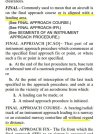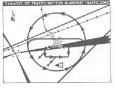dbahn
Pattern Altitude
. . . which is nonsense. If he wasn't on final, where was he? Even the FAA pilot/controller glossary defines final as "commonly" meaning being on the final approach course OR is alingned with the landing area without regard to distance.And apparently the NTSB has come out and kind of arbitrated this to determine that the 340 was not considered to be on final. . .

.


